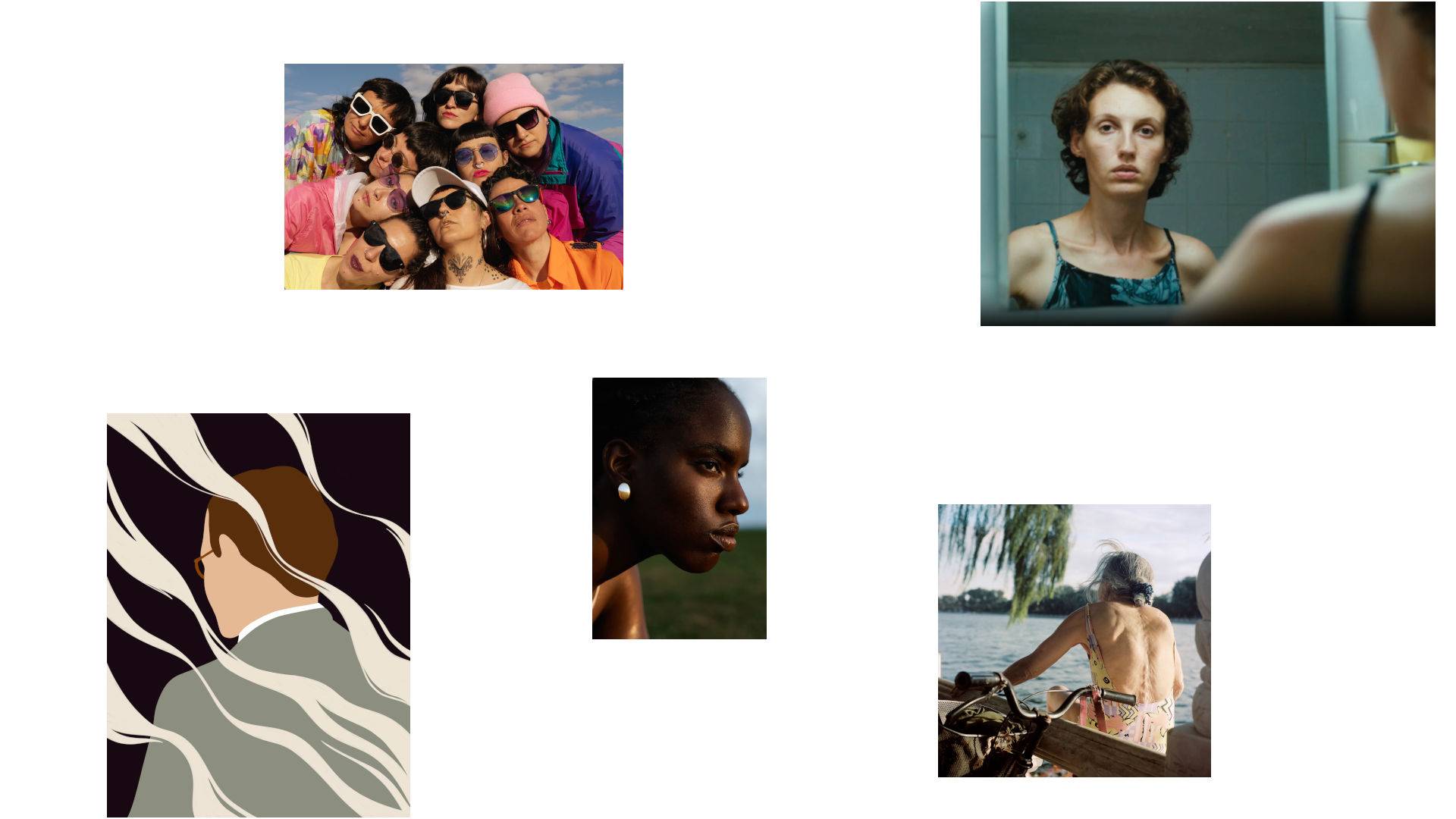It’s a brand-eat-brand world out there, where the market share of brands selling directly to customers is steadily increasing. In 2019, direct to consumer (D2C) sales amounted to $76.7 billion, and in 2020, for obvious reasons, reached $111.54 billion. Projections for the end of 2022 and 2023 anticipate sales of $151.2 billion and $175 billion, respectively. Ecommerce isn’t going anywhere, but the competition is getting stiffer as more established brick-and-mortar brands join digitally native brands in the D2C space.
In the burgeoning world of D2C, branding is crucial for competitive differentiation. But how do companies approach D2C branding effectively?
What is D2C branding?
Let’s start first with a definition. Like your personal identity is more than your clothes, your brand identity is more than your logo. Branding is the way you present your business to the world, directing how your audience perceives you.
D2C branding encompasses product packaging, web design, brand voice and tone, imagery, fonts, and colors but it also includes things you can’t see — like your brand values, policies, mission, and purpose.
Achieving growth through digital brand loyalty is contingent on deeper connections built on addressing and empathizing with higher-level pain points of the human condition. And that requires taking a clear, progressive stance in support of the solution.
Why is D2C branding valuable?
A major benefit of the D2C model over traditional retail is that your brand controls all of your customer data — valuable for continually deepening your audience relationships, refining your messaging, and adapting your marketing strategies that other ecommerce models can’t replicate.
The overarching goal of D2C branding is brand loyalty, and the best way to cultivate is to build trust. Trust is built through empathy with your audience and speaking to their pain points directly with the communicated opportunity for feedback and open dialogue. Effective D2C brands listen to their people and pivot when the feedback tells them to.
The muse of modern D2C branding
Millennials are the driving force behind the success of D2C brands. They’re disenchanted with big-box retailers and huge online marketplaces with little regard for progressive values, innovation, and cultural awareness. Millennials like convenience, and they look for intimate relationships with the brands they buy. More importantly, nearly 70 percent seek out brands whose values align with their own.
Gen Z is following their lead—and expanding on it. Born between 1997 and 2012, Gen Zs in the United States are the most racially and ethnically diverse generation yet. Gen Z are culturally contemporary, politically engaged, and progressive. With a zeal for activism and a talent for organizing and making themselves heard – they relish holding people and big corporations and politicians accountable.
Most importantly for D2Cs vying for a piece of this market, Gen Z wields enormous influence on social media, which they use to curate their own personal brand identity. The things they purchase, and the brands they purchase from, are deliberate and palpable expressions of this identity. Gen Z makes informed purchasing decisions, and they’re willing to spend more money on products that are well-designed and well-made. They prefer to buy things from brands that share their values of inclusiveness, social equality, civic responsibility, and sustainability.
What does modern D2C branding look like?
Modern D2C branding is clear, consistent across channels, and empathizes with audiences. It boldly embodies your brand’s values and ideals in visual media, products, packaging, and written communication. It’s explicit, not abstract. It’s personal, not corporate. Here’s what else it is:
It’s authentic
“Authentic” is one of those words you can slap on just about anything to make it sound more legitimate. But when it comes to D2C branding, it’s not a buzzword — it’s a way of being. D2C brands have to be authentic because modern consumers are savvy and can easily sniff out a rat in their midst. Authenticity is a big-picture idea that comes across in the images and words you use and in the workplace culture your brand creates.
Your site may host convincing copy about your values—like your commitment to diversity or to sustainable products—but If all of your imagery is culturally homogenous or you mail your products in styrofoam, it creates confusion about who you are and negative brand perception.
It’s consistent
Consistency is a prerequisite for authenticity. Whether a small to medium sized business (SMB) or enterprise brand, your identity needs to be consistent and cohesive across all of your channels. This means that all aspects of your brand (org structure, product, visuals, website, social media, email campaigns, digital marketplace storefronts, etc.) have to be immaculately on-brand.
Nobody will take you seriously if the gorgeous lifestyle photography on your site nails your brand’s edgy, moody vibe, but your product copy is anemic and your blog reads like a C+ high school essay. If your website copy and imagery are carefully curated, but your email campaigns look and sound like an entirely different brand, that “Shop Now” button may not see much action.
It’s evolving
D2C branding is anything but a set-it-and-forget-it endeavor. Brand identity, just like your own personal identity evolves over time. Brand maintenance is an ongoing process of building upon your brand identity and continually refining it through active engagement with your customers. As their feedback and data roll in, use it to evaluate how you’re doing, what they like, what they don’t, and how you can optimize your customer experience.
It’s fearless
Don’t be shy! You have an amazing product. People love it, and it really is quite special, but if you brand it the same way everyone else in your vertical is branding theirs—because that’s how the originals did it, and now it’s become a thing—yours will just be another fade-into-the-crowd wallflower, waiting for someone to ask it to dance.
Be bold and take intelligent risks. If it’s worth doing, it’s worth doing big. Fearlessly differentiate your brand from the rest through storytelling, compelling images, and whole-hearted ownership of your values.
Wallflowers afraid to step into the spotlight will forever remain in the shadows. It’s not that they don’t want someone to notice them, but they want to be noticed without making a spectacle of themselves—like the spectacle a D2C sustainable mattress brand made recently when it aired a commercial showing same-sex couples snuggling in bed—”Natural as love.” This was quite the insult to a certain, very vocal hate group, that lost its shit over it. The story went viral, landing on every major LGBTQ+ news site on the internet.
The mattress brand put itself and its values out there—and by doing so attracted customers with those same values. But if the brand had been afraid to push those boundaries for fear of alienating potential customers, it would have been for naught—because those “potential” customers who are now boycotting the brand would never, in a million years, have bought a mattress from a company that actively fights climate change and believes in fair wages, anyway.
How can you elevate your D2C brand’s visual identity?
Branding is selling more than a product (i.e., a mattress.) You’re selling a vision, a lifestyle, or an ideal. And visual branding is one of the most impactful and highest-converting marketing strategies you can employ.
But lots of brands don’t have the budget for a dedicated product or lifestyle photographer on staff to shoot the many images needed for regular, fresh content. Many turn to stock photography and stock video footage, which can help flesh out in-house design work—or serve as the only source for imagery for website content and other assets.
But not all stock photography is created equal.
Quality stock photography, like quality branding, tells a story. It has an underlying narrative—ideally one that questions outdated beliefs, smashes stereotypes, changes perceptions, and helps your customers see themselves—and your shared values—in your brand.
With carefully curated stock photography and a progressive brand strategy, you can put your values and your vision on prominent display.
From fully embracing gender inclusivity and deconstructing masculine archetypes to normalizing all body types and including more images of people with disabilities, brands use stock photography to challenge the status quo in a way that dispenses with worn-out tropes and misguided stereotypes and tells new stories that will resonate with consumers who are also confronting old attitudes and outdated beliefs.

What is the future of D2C branding?
The oldest members of Gen Z are an undeniable presence in the 2022 workforce, but already, their direct, personal spending power amounts to more than $140 billion annually. By 2034, this cohort will overtake Millennials as the largest generation in the U.S., and Morgan Stanley Research predicts that as Millennials and Gen Z populate the workforce over the next 15 years, consumption growth will increase steadily and considerably well into the 2030s.
D2C marketing is continually evolving, and brands need to evolve with it if they’re going to attract this new generation. Increasingly, this involves expanding operations outside of the digital storefront and delivering an omnichannel experience to reach more shoppers. These channels include retail partnerships with online marketplaces, but these types of arrangements are a tough sell for some D2Cs, who shudder at the thought of re-inserting a middleman and giving up the tight control they have over their brand image—and their customer experience.

Curated multi-brand retailers have begun cropping up to woo D2C brands away from the direct-only model. These marketplaces serve consumers who hanker for the best but struggle to find it among the scores of options. Multi-brand retailers serve D2C brands too, who are likewise seeking their cult following but only have the capacity to reach a small percentage of potential followers.
Thingtesting, founded by Jenny Gyllander, is a beautifully branded site that searches out newer D2C brands, reviews their products, tells their stories, and links to their D2C stores. If a featured brand chooses, it can “claim” its page, manage its brand details, and even apply to be a contributor.
Other multibrand marketplaces take different approaches. Some curate D2C brands within a certain niche, like sustainable beauty or breathable athletic wear. Others feature brands with specific qualities, like women-led or BIPOC-owned. These marketplaces, too, provide information about the brand and link to its site.
But while curated online marketplaces appear to be proliferating for the moment, the jury’s still out on whether enough consumers want the help—and whether these middlemen can convince consumers to trust them.
As the future of D2C marketing unfolds we believe authenticity, consistency, intelligent risk taking, and listening skills will remain crucial. Brands that have a solid identity and lead with values across all products, channels, and campaigns with audiences at the center of their universe will stand out from the crowd and find greater success. Be who you are but be ready to integrate feedback and evolve with the times. Malleable strength over rigidity will capture the customer every time.
Stocksy is a royalty-free stock media agency specialized in conceptual and authentic imagery that captures the modern world. We are committed to enabling the entire creative class to execute — without compromise — meaningful, forward-thinking work that drives social progress.
























